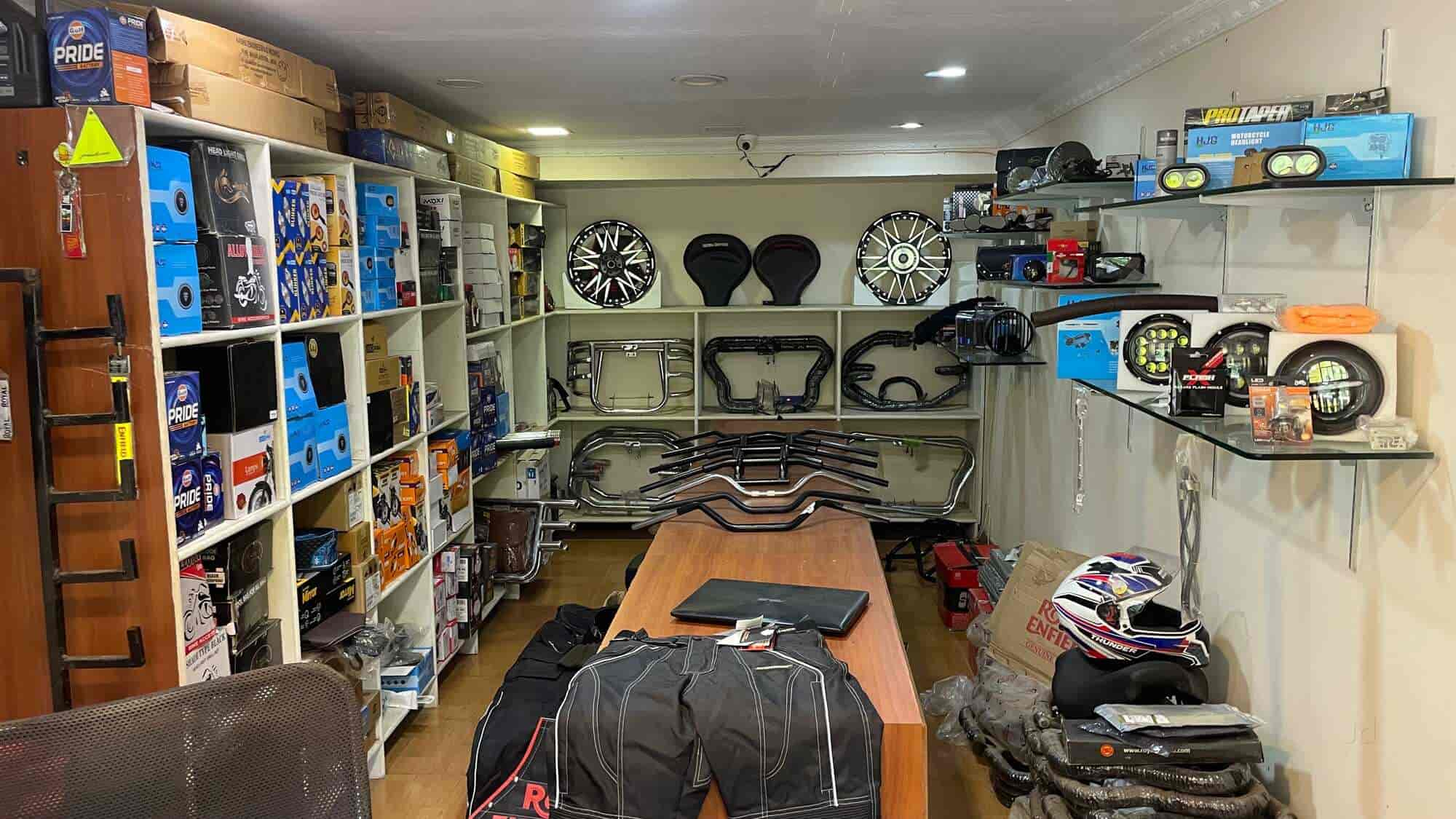Locate Affordable Costs on Motocross Parts NZ for each Bike
Locate Affordable Costs on Motocross Parts NZ for each Bike
Blog Article
Comprehending the Important Parts of a Motorcycle: A Comprehensive Overview for Fanatics
For motorcycle enthusiasts seeking to raise their riding experience and guarantee their bikes run smoothly, recognizing the vital elements of a bike is extremely important. Each aspect, from the engine's detailed workings to the important function of the braking devices, not just influences performance however also safety and convenience. This guide will go through the essential components that every rider need to be familiar with, enabling informed choices in both maintenance and possible upgrades. As we start this expedition, one must ask: exactly how does each element interact to create the smooth experience every enthusiast seeks?
Engine Components

The camshaft plays an important duty in managing the timing of the engine's valves, ensuring the exact opening and closing required for efficient fuel and air intake, as well as exhaust expulsion. This timing is essential to preserving optimal engine efficiency and efficiency. Additionally, the carburetor or gas injection system, relying on the motorbike version, is responsible for blending air with gas in the correct ratio for burning.
The air conditioning system, either air or liquid-based, works to maintain the engine's temperature level within functional limits, protecting against overheating and making sure long life - motorbike shop. Each part, carefully created and incorporated, adds to the smooth operation of the engine, defining the motorbike's power outcome and general efficiency
Transmission System
Integral to the motorcycle's performance, the transmission system makes certain reliable power transfer from the engine to the wheels. This system comprises a number of crucial parts, including the clutch, gearbox, and last drive, each playing an important role in translating the engine's power into movement. The clutch, usually run by a hand lever, serves to disengage the engine and engage from the transmission, enabling for smooth gear changes and controlled acceleration.
The gearbox, usually referred to as the transmission proper, contains a collection of equipments that motorcyclists can manually shift through to adjust the bike's rate and torque result. These equipments are set up in a sequence that enables the bike to speed up smoothly and maintain optimum engine efficiency across various rates. The majority of motorbikes use a sequential transmission, calling for the motorcyclist to shift equipments in a fixed order.
Braking Systems
While understanding the transmission system is key to utilizing a motorcycle's power, just as vital is the capacity to manage and stop that power effectively, which is where stopping mechanisms enter play. Brakes are vital for safety and security and efficiency, providing the biker with the necessary control to browse various terrains and conditions. Commonly, motorbikes include 2 sorts of braking systems: disc brakes and drum brakes.
Disc brakes are much more widespread in contemporary motorcycles because of their superior efficiency. They include a brake disc, caliper, and pads. When triggered, this content the caliper presses the brake pads against the rotating disc, converting kinetic power into warm, thereby slowing down the wheel. This system offers much better heat dissipation, constant efficiency, and enhanced quiting power, especially in damp conditions.
Conversely, drum brakes, though less typical, are still located in some motorcycles. They work by pushing brake footwear versus the inner surface of a drum affixed to the wheel. While usually less effective in warm dissipation and quiting power, drum brakes are less complex and more affordable.
Recognizing these stopping systems' nuances enables motorcyclists to keep their bikes properly and appreciate the engineering that makes sure secure and efficient stopping.
Suspension and Steering
Suspension and steering systems are vital parts that significantly influence a motorbike's handling and experience convenience. The shock absorber, being composed of forks at the front and shock absorbers at the back, soaks up roadway abnormalities, boosting security and control. Front forks, typically telescopic or inverted, compress and rebound to alleviate effects, while rear shock absorbers preserve tire call with the roadway, important for grip and security.
Steering, centered around the handlebars, connects the cyclist to the motorcycle's directional control. The guiding head bearings ensure smooth procedure, permitting specific maneuverability. Correct alignment and upkeep of these bearings are crucial for foreseeable guiding reaction and decreasing rider exhaustion.
The suspension's adjustability is one more crucial aspect; preload, damping, and rebound setups enable customization to suit numerous riding styles and conditions. This versatility is essential for maximizing efficiency, whether browsing city moped rain cover streets or tackling rugged routes. Technologies like electronic suspension systems use real-time modifications, enhancing experience quality throughout diverse surfaces.

Electric Systems
After making certain a regulated and smooth experience through effective suspension and guiding systems, attention transforms to the electric systems, a critical facet of contemporary bikes. These systems play an important duty not just in starting the engine however additionally in powering various parts that enhance the performance and safety and security of the motorcycle.
At the heart of a motorbike's electric system is the battery, which shops electrical energy essential for starting the engine and powering auxiliary systems - motocross parts nz. The alternator or generator, combined with the rectifier-regulator, makes certain the battery remains charged while the bike functions, converting mechanical power into electrical power and keeping voltage levels
The ignition system, one more essential element, is accountable for igniting the air-fuel blend in the engine's cylinders. Modern motorcycles typically make use of a digital ignition system, using higher performance and dependability contrasted to standard systems.
Lights systems, consisting of fronts lights, tail lights, and signs, are additionally essential, ensuring visibility and safety for the rider. Additional digital parts such as sensing units, control devices, and presents add to sophisticated functions like fuel injection management, anti-lock stopping systems (ABDOMINAL MUSCLE), and electronic control panels, better boosting the riding experience.
Verdict
A comprehensive comprehension of a bike's important parts, including the engine, transmission system, braking systems, suspension, steering, and electric systems, is important for enthusiasts intending to optimize efficiency, safety, and convenience. Proficiency of these aspects permits notified choices relating to maintenance and upgrades, eventually enhancing the riding experience. By incorporating this understanding, motorcyclists can guarantee their bikes operate at peak effectiveness and reliability, consequently making the most of both satisfaction and longevity of their cars.
For bike enthusiasts looking to raise their riding experience and guarantee their bikes run address efficiently, understanding the crucial components of a motorbike is vital.Indispensable to the motorcycle's performance, the transmission system makes certain efficient power transfer from the engine to the wheels.While comprehending the transmission system is crucial to harnessing a motorcycle's power, similarly crucial is the capacity to control and stop that power efficiently, which is where braking systems come right into play. Commonly, motorcycles include 2 kinds of stopping systems: disc brakes and drum brakes.
A thorough comprehension of a motorcycle's vital parts, consisting of the engine, transmission system, stopping mechanisms, suspension, guiding, and electric systems, is indispensable for enthusiasts intending to maximize convenience, performance, and safety.
Report this page